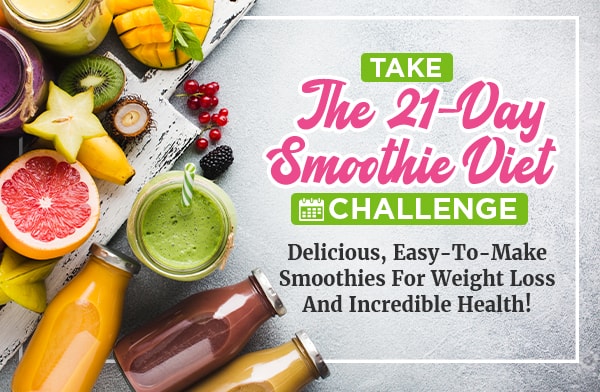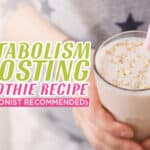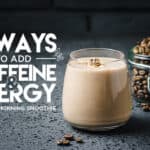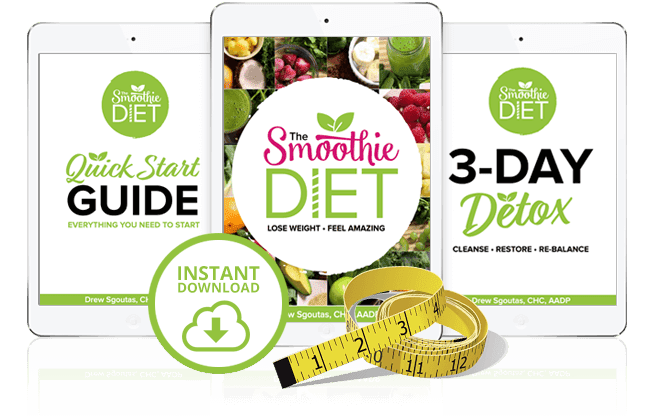FAQ: Should You Drink a Smoothie to Break a Fast?
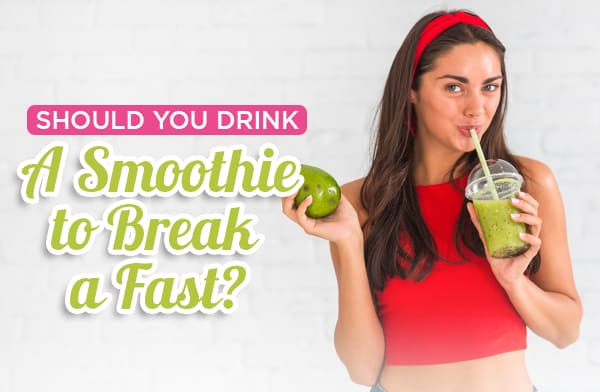
Fasting is any period you spend without eating or drinking anything other than water. There are many different reasons to fast, including:
- Daily fasting as you sleep; it’s called “breakfast” for a reason, after all.
- Intermittent fasting, as a way to lose weight and control cravings.
- Extended fasting as part of a cleanse or dietary reset program.
- Religious fasting, such as Lent, Yom Kippur, or Ramadan.
Additionally, different kinds of fasting have different rules. Some are strict and restrict you from consuming anything, even water. Most allow water, at least. Some restrict specific kinds of foods or just the time you’re allowed to eat. It all varies.
I’m not here to judge why you’re fasting. I’m here to answer one simple question: are smoothies a good food to break your fast?
Why Breaking a Fast the Right Way is Important
Fasting, particularly the longer kinds of fasts that last more than 48 hours, spur a variety of biomechanical changes to your body. Your digestive system slows down, with nothing to digest, producing less acid and working more slowly. Your endocrine system starts tapping alternative sources of the enzymes, vitamins, and minerals necessary to produce and ferry neurotransmitters around. Your body needs energy to function, and with no energy coming in from the outside, it shifts into ketogenesis, burning stored fat for fuel.
Despite these changes, your body is still primed to make use of food as soon as you get it. It’s an adaptation we – and most animals – evolved in the face of inconsistent or scarce resources. Your body needs to be able to survive through days of famine or even just a failed day of hunting and gathering, after all. But, when you do eat food, you need to make the best possible use of it, particularly in terms of storing it for future times of famine.
In fact, this is where “rebound weight” comes from. When you partake in fasting or a starvation diet, your body adapts to burning fat for fuel, and you lose weight. When you then return to your previous dietary habits, your body takes advantage of the comparative bounty and packs that fat back on to insulate you against future hard times.

To actually lose weight and keep it off with fasting, you need to:
- Keep up your habit of fasting on an ongoing basis. Intermittent fasting is a lifestyle, not a temporary fix.
- Adjust your non-fasting diet to be less fat-forming and healthier for your body.
That’s all beside the point, though.
The point is, when you break a fast, your body springs into action. While the biological processes know what they’re doing, you might not feel very good about it. You might get a sudden surge of energy and then a devastating crash. You might feel bloated or stuffed. The food might hit your stomach like a brick and feel like it just sits there. You can end up with digestive issues and spend half your day in the bathroom.
That’s all just the surface. For much longer fasts, if you eat too quickly afterward, it can actually be detrimental to your health. A sudden change in nutrients and, particularly, electrolytes, can cause all sorts of problems for you.
Understand the Needs of Different Scales
Different kinds of fasting have different needs in how you break them.
Intermittent fasting – the kind where you restrict your caloric intake to certain hours of the day – doesn’t actually need any special preparation unless you have an underlying health condition. After all, your body evolved to be able to handle short periods of fasting seamlessly. That’s what sleeping is, right?
Longer kinds of fasts have different requirements, and it can also change depending on what you’re allowed to have during your fast. If you can drink water or even tea, your fast will be less harsh than if you weren’t allowed anything. Also, the longer a fast is, the harder it will be to break without repercussions.

If you break your fast the wrong way, you can end up with excess gas, flatulence, bloating, diarrhea, nausea, and even vomiting in extreme cases. You can also see surges and crashes in energy, clouded thoughts, and other cognitive changes.
If you’re using a fast as a transition point to cut out a certain kind of food or ingredient, such as processed sugar, processed flour, carbs in general, or caffeine, you’ll add withdrawal symptoms on top of everything else. Your body will need to adjust to new kinds of nutritional balances.
What a Food Needs to Break a Fast Smoothly
If you’re putting together a fast-breaking meal, you want it to have the right balance of healthy nutrients, vitamins, minerals, and other ingredients, with a minimum of the sorts of ingredients that will cause your body problems.
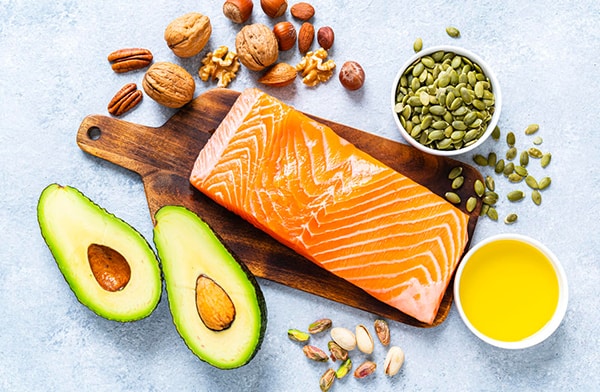
What should your fast-breaking food have?
- Electrolytes. Electrolytes help balance out fluids throughout your body. Poorly-balanced electrolytes can cause fluid retention or dehydration, which can lead to cognitive issues, blood pressure issues, and more.
- Liquid/water. Your body needs water to survive, so a breakfast that includes plenty of liquid is generally a good idea. Pure water is the best for hydration, but other liquids can be good too.
- Healthy fats. Including good fats can help with cholesterol, energy, and digestion.
- Low in sugar. Sugar hits your body like a brick. Moreover, sugar is the primary food source for the bad gut bacteria that will be actively on the hunt for food as you fast. (Fiber is what you feed the good bacteria.)
- High in vitamins. In particular, vitamins A, the B complex, C, and E are all excellent to get. Pretty much any vitamin will be in short supply after an extended fast, so providing your body with plenty of them will be beneficial no matter how you slice it.
- High in minerals. Your body needs a wide range of minerals to fuel biochemical processes, from brain function to synthesizing collagen to healing sore muscles. Any food you can get that has a wide array of minerals is a good food to add to your breakfast.
- Omega-3s. These fatty acids are a huge part of maintaining a healthy blood pressure and heart, among other things. They’re also fairly easy to get, even if you don’t want to eat fish for breakfast.
I can think of a few different foods that can meet some or all of these criteria. I bet you can guess what one of them is, but others include whole fruits, bone broth, and even avocado toast.
The Worst Things to Break a Fast
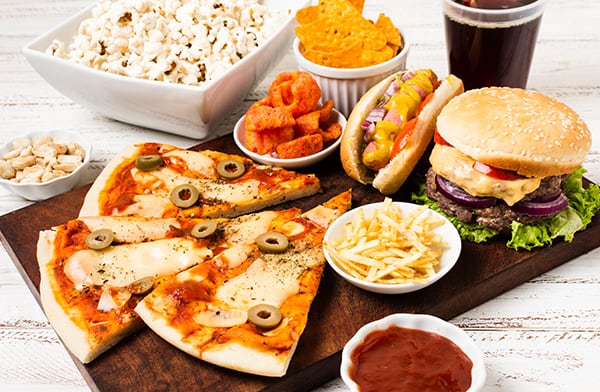
Meanwhile, there are plenty of foods you shouldn’t eat first thing after fasting. Some are obvious – alcohol will tear through your system – but others might not be quite as obvious.
- Processed sugars. Any sugar may be worse than no sugar, but processed sugars are the worst of the bunch. You can usually get away with natural fructose in whole fruits, but you’re more likely to run into issues with HFCS or sugar-added foods.
- Fibrous vegetables. In particular, cruciferous veggies like broccoli can be harsh on your system. The fiber is good, normally, but immediately after your fast, it can be very hard for your body to ramp up into digesting them. Plus, many of these veggies are known to cause gas in the best of times and will lead to bloating and discomfort after a fast.
- Bad fats, of course, are best avoided.
- Dairy. Even though a tall glass of milk or cereal for breakfast is a tradition in America, it’s actually quite bad for you. Even just the milk has a lot of sugar in it in the form of lactose.
I think you can see the trends here.
Why Smoothies are Excellent for Breaking a Fast
Smoothies have a ton of benefits going for them, many of which are even more beneficial when you’ve been fasting. Let’s go through a rundown.
Smoothies are blended and make it easier to digest them.
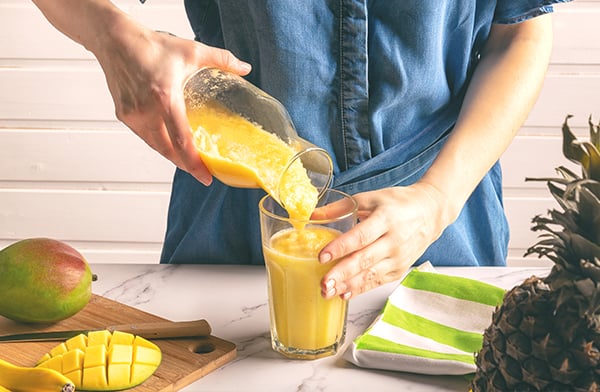
Since smoothies use mechanical action via a blender to break down their ingredients, part of the work your body does is already done for you. Your body can get right to breaking down the ingredients for nutrients instead of needing to muster up the energy to start breaking things down in the first place. This is most relevant with the tougher ingredients like fiber.
Smoothies have a wealth of nutrients.
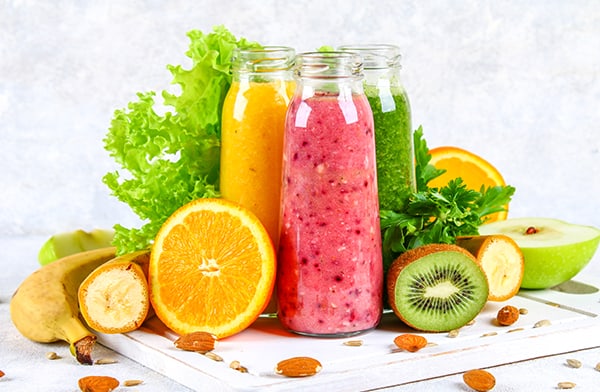
Look at the list above. Smoothies hit all the bases, right? They’re packed with good, healthy ingredients. They don’t have a ton of added sugar or hard fiber. With the right ingredients, you can load them up with vitamins, minerals, phytonutrients, protein, fats, and more. Pretty much everything you can think of on a list of good post-fast foods can be added to a smoothie seamlessly.
Smoothies can get you veggies without the drawbacks.
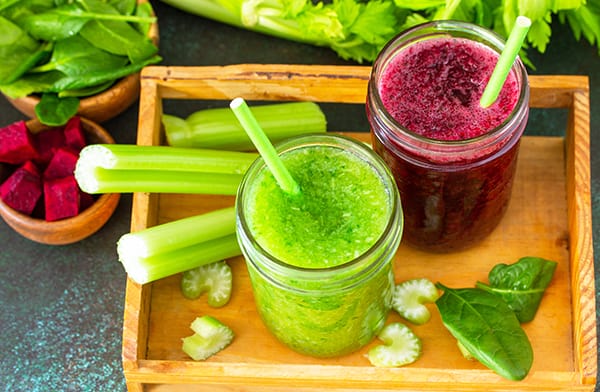
Now, you’re probably not going to be putting broccoli in a smoothie. But, I wholly recommend that every smoothie has at least a handful of greens in it, and those greens will give you a ton of beneficial nutrients. You also get fiber in a way that isn’t likely to trigger digestive problems.
Smoothies won’t hammer your system.
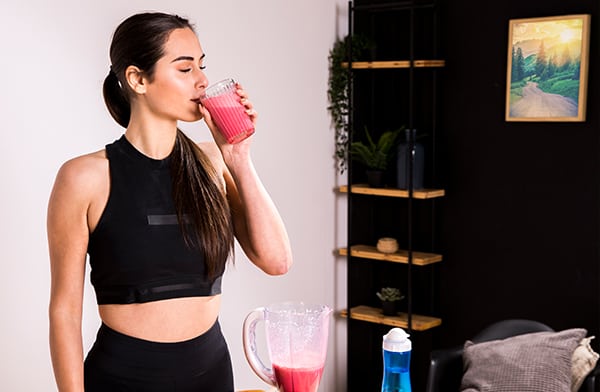
One of the biggest problems with eating after a fast is that your body is unprepared to make the most out of what you give it. You’ll end up letting a good portion of your nutrients go right through you. Smoothies are much better positioned to be digested and absorbed. They’re also relatively low calorie, compared to pretty much any other food you could eat to break a fast.
Smoothies give you level energy.

The blood sugar spike and subsequent crash that comes with many forms of breakfast won’t happen with smoothies. That’s because a smoothie has all three forms of energy. The natural sugars present in fruit give you easily accessible, short-term energy. The protein you get from certain ingredients provides slightly harder to access but longer-lasting energy. And, of course, the fiber in the veggies you add will give you longer-lasting, harder to access energy. All three will help balance each other out and avoid issues you might run into with highs and lows and crashes.
How to Break a Fast with a Smoothie the Right Way
Convinced? I thought you might be. If you want to break a fast with a smoothie, you need to pick the right smoothie.
If your fast is intermittent and short-term, any smoothie will do. Since there aren’t a lot of physiological changes from the fast, you don’t need to worry about a precise balance of nutrients. I recommend checking out my Smoothie Diet document, even if you’re not interested in the weight loss aspects. I have dozens of smoothie recipes, along with plenty of smoothie advice, in that document.
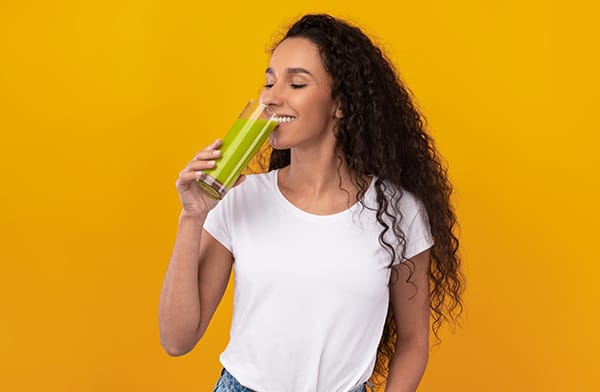
If your fasting lasts longer – 48 hours or more, generally – you want to build a smoothie with a more careful balance of nutrients. Go heavy on the greens, lighter on the fruit, and consider adding additional ingredients to help support you. I know some people recommend protein powder, and that’s fine. Others say apple cider vinegar can be a great idea. I’m not wholly sold on the idea, but feel free to give it a try.
Whatever set of ingredients you pick, make sure to take your time drinking your smoothie. Chugging the whole thing down is likely going to be unpleasant as it hits your stomach and runs through you. Instead, just sip at it over the course of an hour or so, enjoying it as you go. With any luck, you’ll maintain even energy levels, feel good about your choice, and be ready for a larger dinner when the evening rolls around.
If you have any questions about smoothies and fasting, feel free to drop me a line. As you’ve probably guessed by now, I absolutely love talking about smoothies, so I’ll be more than happy to offer what advice I can. You can find my contact information right over here!
